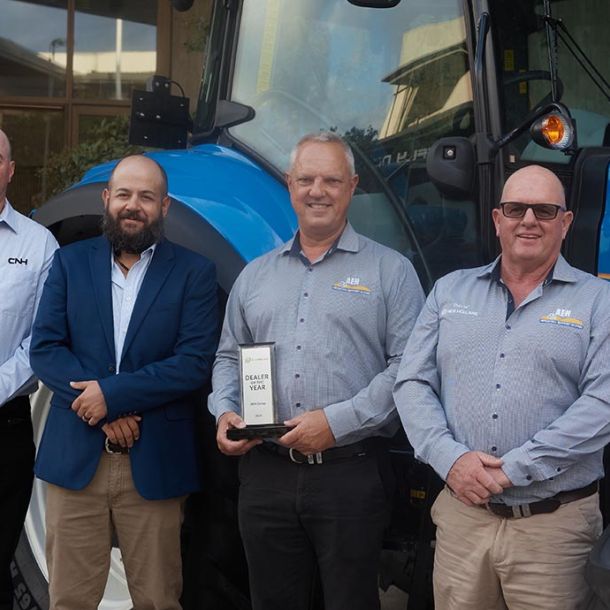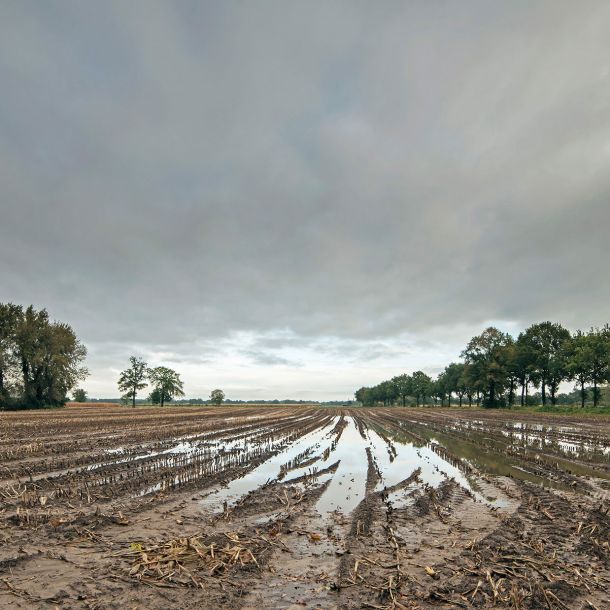Strategic tillage a winner in no-till cropping
What is strategic tillage?
Conservation farming and no-till cropping are now widely practised by the majority of Australian farmers. Most importantly, this approach preserves soil structure, making for less erosion, better moisture penetration and infiltration and improved soil conditions for plant growth. Retained crop stubble can add to the store of soil carbon.
But no-till or zero-till farming can introduce some drawbacks, and strategic tillage seeks to overcome these. The question is: will strategic ploughing cause long-term damage to the soil structure that no-till has sought to improve?
Why use strategic tillage in a no-till system?
A number of research trials have sought to answer this question. Problems with no-till can arise from weed species developing resistance to common herbicides; soil acidity buildup; a deficit of nitrogen in the top soil layers and the possibility of fungal diseases building up on the stubble. Retained stubble can become habitat for mice and slugs and each of these issues can adversely affect following crops.
Some potential advantages of strategic tillage include integrated weed control for weeds that are developing resistance to key herbicides, and the incorporation of lime to depth on acid subsoils. Tillage can also address mice and slug buildup in residue.
Studies throughout the cropping zones show few short term and environmental costs from strategic tillage. Concerns include destruction of soil macro-and micro aggregates that can lead to water erosion and loss through dust. There is no doubt that soil macro-aggregates (larger groups of soil particles with large pore spaces) are temporarily damaged by cultivation. And dust (which is the micro-aggregate portion of soil) can also be lost if conditions allow.
But the research consistently shows that these changes are temporary. Soil physical, chemical and biological fertility in the surface layers (0–20 cm), as well as crop growth and yield were monitored for 5 years.
Trial results give a ‘thumbs up’
The results of several long-term trials suggest that strategic tillage can be a useful strategy to manage limitations of NT systems. Tillage at the right intervals can give benefits such as short term yield improvement, greater profitability and reduced reliance on herbicides.
Soil carbon is certainly reduced initially by tillage, but recovers to previous levels after two years. Soil aggregates were reduced in the top 0-5 cm of soil, but these also recovered within 1-2 years after tillage. Soil pH, total carbon and nitrogen that were confined to the surface layer of soil were redistributed more evenly through the topsoil and remained that way for the 5 years of the trials.
Crop yields of strategic tillage and no-till treatments during the 5 years of the experiment remained the same. Overall, the minor short-term negative impacts on soil structure, the definite beneficial effects on soil chemistry and biology, and absence of impacts on crop production suggest that strategic tillage can be a valuable agronomic tool in sustainable production in many cropping and mixed farming enterprises.
Choosing machinery for strategic tillage
Trials suggest that in most cases, there were no great differences between various strategic tillage implements. In north-eastern Australia, most growers use non-inversion cultivation based on tyne and disc implements. It seems that the type of tillage is less important than the frequency. And in an otherwise no-till cropping program, tillage can be used to address specific issues such as weed control or stubble buildup or allow for deep nutrient placement. Tyne tillage lifts and shatters the soil, removing shallow compacted layers for in-crop weed management, deep placement of nutrients and breaking up hard pans. Disc tillage cuts and mixes stubble and soil clods to leave a fine tilth, considered effective for reducing disease and pests and weed management during the fallow period. Discs are useful for incorporating either lime or gypsum. Both tillage operations are shallow as compared to mouldboard tillage which is seldom used in farming these days.
K-Line Agriculture produces two machines specifically designed to carry out the operations described here: the Speedtiller® and Flexi-Mulch®. The Flexi-Mulch® is the smaller brother to the Speedtiller®. They are both high performance disc implements designed to efficiently cut, size and incorporate high levels of crop residue. Soil erosion from wind and water is drastically reduced by their excellent incorporation ability.
K-Line Ag’s Speedtiller® penetrates soil at the ideal depth and cuts to the desired disc angle. The high-speed discs allow for better trash flow and incorporation, while simultaneously lifting the soil for less compaction. This effectively improves the quality of the soil and helps maximise crop yields.
The Speedtiller® handles heavy residue with ease, moves the soil with a set of fully adjustable offset discs, and the trailing roller bar is an excellent finishing tool for levelling and one-pass seedbed preparation.
The right machine, the right time
Strategic tillage is an invaluable tool for no-till cropping programs. Timing of cultivation has a major impact on the success of any tillage operation.
Soils differ in their reaction to tillage, and there are a number of factors to take into account when deciding if and when to cultivate a no-till paddock. These factors include:
- the amount of trash or stubble present. This will govern the amount of chopping and incorporation required;
- the weed burden, weed history, and the likelihood of herbicide resistance;
- soil type. The most common soils of the cropping zone, Vertosols, are resilient to one-time tillage, while soils with texture contrast (Sodosol) and weakly structured A-horizons (Dermosol) are likely to suffer more temporary damage in the first 3 months of cultivation;
- soil moisture at the time of tillage. You will want to avoid the risk of soil smearing, compaction and aggregate breakdown;
- the amount of stored moisture available for plant establishment;
- the need to incorporate soil amendments such as lime or gypsum. Both need to be incorporated to be effective.
Fortunately, the tools for a flexible program of strategic tillage are on hand. K-Line Ag’s Speedtiller® and Flexi-Mulch® disc tillage implements allow farmers to design a strategic tillage program to meet the conditions they need for success. These machines, designed specifically for Australian farms, can fulfill the needs for a successful strategic tillage operation, producing the benefits of occasional cultivation without cancelling the advantages of a no-till cropping program.








